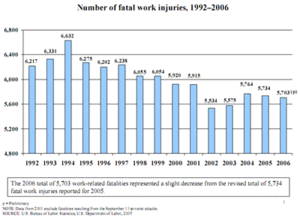
We've all experienced the critical, negative work colleague who puts a dampener on everything. They complain about the boss, other staff members, customers, new...
High performance companies integrate safety into every company decision. This is because they realise that the safety of their staff is an important part of how they do business, but also that by looking after safety, staff morale, productivity and even profitability improve.
When it comes to high performing organisations, there are three inter-related core areas that are constantly kept in balance, in order to create the right environment for safety and productivity. By default, these areas also create a healthy workplace culture of which safety is a component.
These are Unity, Compassionate Leadership and Communication. By keeping these areas in check, organisations hit the sweet spot for trust (which is when people feel safe).

The goal in creating a high functioning culture is for staff to trust their senior leaders and to feel safe.
As Simon Sinek says in Start with a Why, “only when individuals can trust the culture of an organization as a whole, will they take personal risks to advance the company. Great organisations become great because the people inside feel protected”. And this desire “to feel safe” is two-fold, it means feeling safe to excel and take risks in your career, but also knowing that you are protected from getting injured at work or from being bullied or harassed by colleagues.
3 Simple Steps
To get to "Trust", companies need to align themselves with the following three inter-related factors that are driven from the top, but are orchestrated at every level:
1.Unity - High performing workplaces are unified and have every-one working together as a team. There is no “Us versus Them” mentality.
Humans have a very strong and instinctive desire to be part of something bigger than themselves. It's the same at a workplace. Staff want to be part of a group and a successful one that’s going somewhere. It’s important for companies to cultivate a strong sense of group identity. This means that all communication uses the terms “we” and us" and that clear goals are set.
Staff must also be encouraged to take individual ownership of safety (see 5 Ways to Encourage Safety Ownership), as well as for the own career goals.
2. Compassionate Leadership - We all need to feel loved and appreciated. It’s important that companies convey this to their staff. Not just through words, but through the right actions.
Staff and even visitors, to your workplace, will look for visible signs that staff are highly valued to the organisation.
This means looking for evidence of:
By ensuring a tidy work environment and operational equipment, leaders ensure that subtle messages are given that only productive and safe behaviours are tolerated.
Other more intrinsic signs are that staff ’s personal needs are considered important and that they are listened to, if they have any concerns.
3. Communication - Finally, we have the final step that communicates the other two areas but in a transparent, predictable manner. This is where communication connects staff emotionally to the information by using stories and metaphors.
Communication must be regular and honest. Woe betide any CEO who dares to announce that safety is important, but in a later announcement declares that due to poor sales, the safety budget is going to be cut. Messages must always be free from hypocrisy and believable.
They must also include:
Unity messages that working at the company is a team effort, that group goals are achievable and that looking out for teammates is required, while being responsible for your own safety.
Compassionate messages that the company wants the best for staff, that staff contributions are welcomed and that safety is a priority.
Communication is also open at all levels and staff can offer feedback that is actioned rather than ignored.
By ensuring that these three factors are in balance, organisations ensure that there workplace is highly functional and cohesive, with trust being the centrepiece of how the organisations operates.

We've all experienced the critical, negative work colleague who puts a dampener on everything. They complain about the boss, other staff members, customers, new...

Since the early 1990's, most companies have got their act together and decreased their workplace injuries (see chart). After all, it's a no-brainer that workplace...